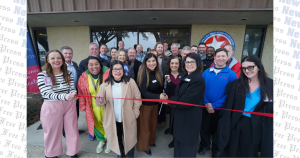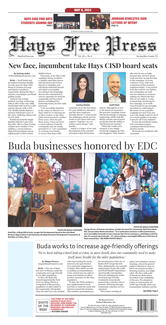Over 19,100 students now call Hays CISD home with more expected to enroll in the coming months, according to the district’s 10-day enrollment report disseminated Sept. 2.
As the district continues to expand, officials are now bracing for the district to reach 19,600 students by year’s end, with enrollment possibly surpassing 20,000 by fall 2017. The new enrollment projections present a challenge – to accommodate for the influx of students.
Tim Savoy, Hays CISD public information officer, said the district ended the 2015-2016 scool year with roughly 18,800 students, about 20 to 25 more students than was projected.
Growth, however, will continue to expand beyond the Labor Day holiday, Savoy said. Such growth was not seen several years ago, when enrollments stabilized after November.
But the attractiveness of the Austin region has spurred additional growth, Savoy said. Popularity of the district stems from the relatively affordability of the area, along with the Austin economy.
“We don’t stop (growing) in the fall semester anymore,” Savoy said. “We effectively grow all year along. Over the summer, we see larger jumps in enrollment.”
That growth brings many challenges when it comes to accommodating the new students.
Savoy said it’s a community-wide concern, as it extends not only to campus capacity, but also infrastructure and utilities.
Savoy said the district will begin reviewing the situation this October when the Growth Impact Committee prioritizes projects for a May 2017 bond initiative.
The GIC manages the needs and the wants for the district when it comes to bond package items.
One big ticket item that could be included in the May 2017 bond is a $100 million third high school, which is to be located on FM 967 near Carpenter Hill Elementary School.
Other large projects could include two new elementary schools.
Growth also places a strain on student transportation. The district could look in this bond package at adding to its fleet of school buses to accommodate for the growth. Repairing and renovating existing facilities, which would follow the district’s facility needs assessment, will also be reviewed.
Prioritizing what the district needs, while also making sure the district can afford it, is paramount. The district has a capability to sustain a $250 million bond, without raising its Interest & Sinking (I&S) rate. Savoy said it’s a far cry from the district’s 2014 bond package, which was capped at $70 to $80 million.
Increased property values, along with more commercial business in the area, have contributed to the capacity increase.
But the district must also be “efficient with what we have,” as there is an added cost to the growth, Savoy said.













